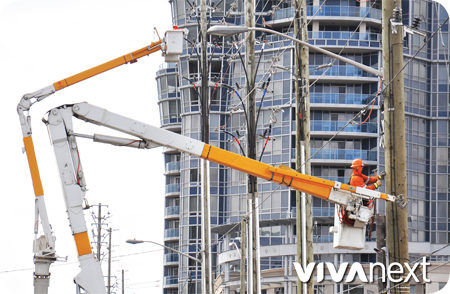In many areas of the vivaNext projects, construction work is definitely visible – especially on Davis Drive and along Highway 7 West. In others areas – such as Yonge Street – it’s not quite so obvious. But work on Yonge Street has been going on this year for months, and it’s also starting up in phase 2 of the Highway 7 West rapidway.
Here’s some of what we’ve been up to – a very important part of construction – utilities!
there’s a lot going on underground
Upgrading the utilities to prepare for the growing population of York Region is a must. Plus, in order to upgrade utilities and widen the road for the rapidway, the existing utilities below the roadside have to be moved.
That’s because locating, upgrading and relocating utilities involves more than just building a road. And each utility has its own requirements.
utilities keep everything working
Utility work along the rapidway includes locating, removing and upgrading water mains and storm sewers, removing old copper cable and installing fiber optic cable for telecommunications, electricity, shutting down old gas mains and installing new ones, and it also includes upgrades and reconstruction to bridges and culverts and moving and upgrading traffic signals and street lights.
but first…
The first thing that happens along any new rapidway project is “utility investigations,” which means identifying where existing utilities are, to confirm what has to be moved. We can’t upgrade them until we find them, and some utilities can be as old as the road – installed before towns began documenting utility locations. So if you see crews digging small test pits along Yonge, you’ll know that’s a utility investigation where crews are making sure the utilities are where we think they are, and checking out what condition they’re in.
Next time you’re playing the game of Monopoly and you land on “Utilities,” feel lucky. “Utilities” are what keeps everything working at “Boardwalk,” “Park Place” and VivaNext!
For emailed updates about the progress of the various vivaNext projects: click here to subscribe.


